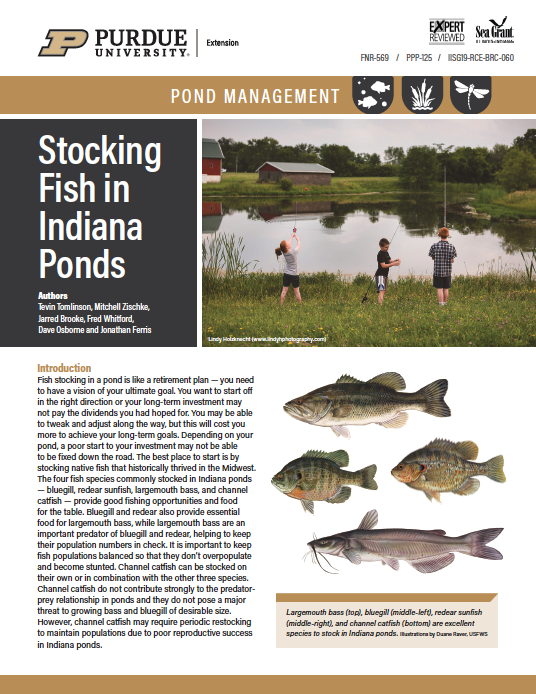Results
Year: 2019
Indiana Master Watershed Stewards are trained volunteers who understand how watersheds work and are willing to help with watershed improvement efforts in their communities. Master Watershed Stewards complete a 12-week training program that pulls together information from scientists, researchers, and watershed management professionals. Topics will include how watersheds function, what factors affect watershed health, how water is managed for human use, and how volunteers can play a part in promoting watershed health and appreciation.
For more detailed information, visit Indiana Master Watershed Steward
Year: 2019
The Great Lakes are home to eight species of salmon and trout. These species can be difficult to distinguish from each other as they overlap in their distributions and change appearance depending on their habitat and the time of year. This illustrated, peer-reviewed, two-page guide, courtesy of the Great Lakes Sea Grant Network, shows important body features and helpful tips to identify and distinguish between salmon and trout species in the Great Lakes.
This document is available through the Purdue University Extension Education Store at https://edustore.purdue.edu/FNR-579-W.html
File Type: pdf
File Size: 618.04 KB
Year: 2019
On October 16 and 17, 2018, nearly 60 scientists and managers met at a workshop in Milwaukee, WI to discuss research needs for Lake Michigan. The workshop, sponsored by the International Joint Commission through its Science Advisory Board Research Coordination Committee and organized by Illinois-Indiana Sea Grant, was part of the Cooperative Science Monitoring Initiative (CSMI). The main purpose of the meeting was to kick off discussions about research priorities to be considered during the 2020 CSMI intensive field year on Lake Michigan. This document summarizes the meeting proceedings.
Download File

File Type: pdf
File Size: 7.78 MB
Year: 2018
The role of the Cooperative Science and Monitoring Initiative (CSMI) is to provide enhanced monitoring and research activities that provide relevant information to address the science priorities of the Lake Partnerships (established under the Lakewide Management Annex of the 2012 Great Lakes Water Quality Agreement) across the Laurentian Great Lakes. The Lake Michigan Partnership, a collaborative team of natural resource managers led by the U.S. Environmental Protection Agency with participation from federal, state, tribal, and local governments or agencies, uses the information collected through CSMI to help develop long term ecosystem-based management strategies for protecting and restoring Lake Michigan’s water quality. On a practical level, CSMI is an intensive effort to collect information on the health of each lake, rotating to one Great Lake each year. In 2015, it was Lake Michigan’s turn. This is an executive summary of the 2015 research results and the associated white paper containing more specific information.
Download File
Page 19 of 40
Note: Some older Illinois-Indiana Sea Grant publications have not yet been restructured into ADA compliant formats. We are actively working on this. If you are having difficulty accessing a particular item in one of our databases, please contact iisg@purdue.edu with the name of the item and its URL for further assistance.






